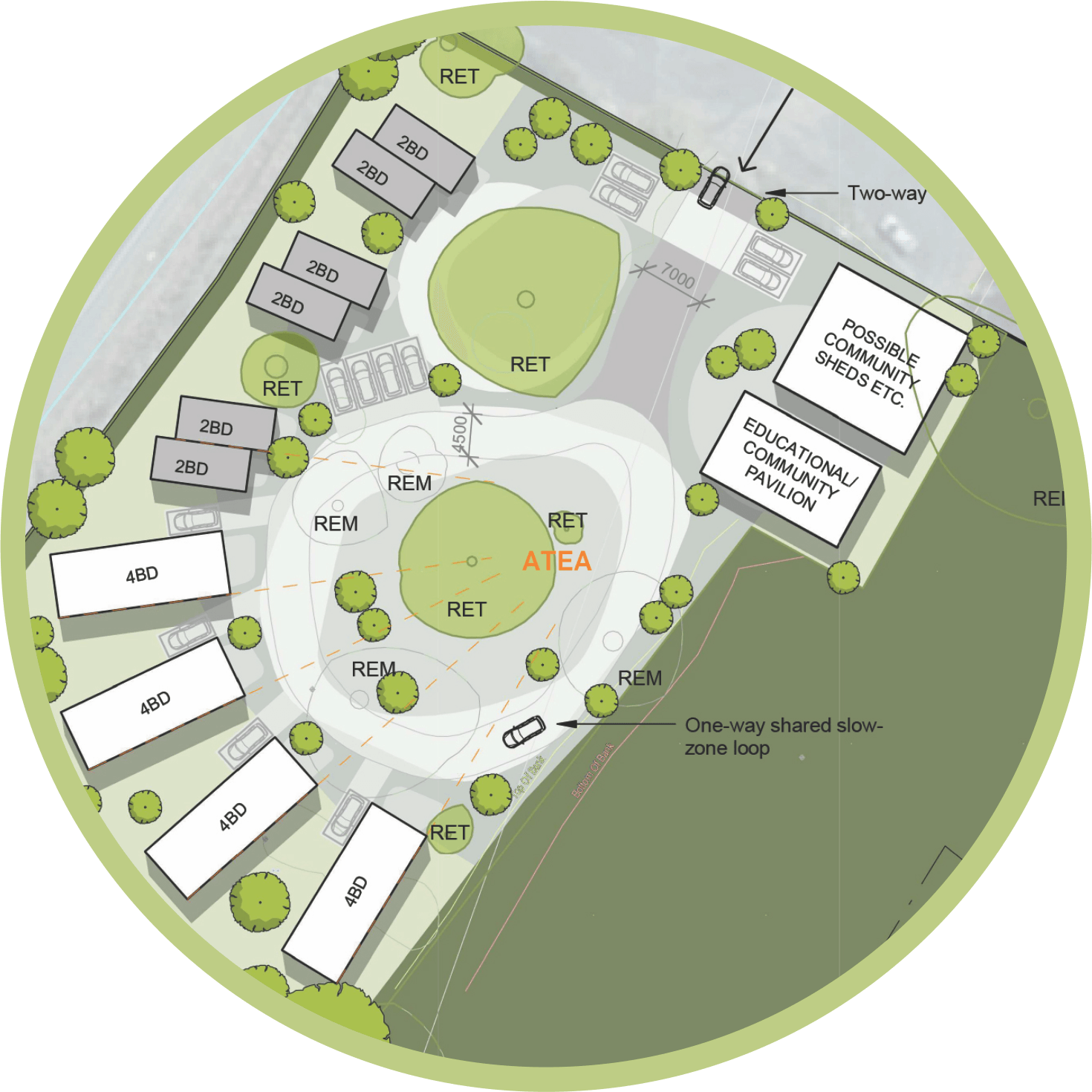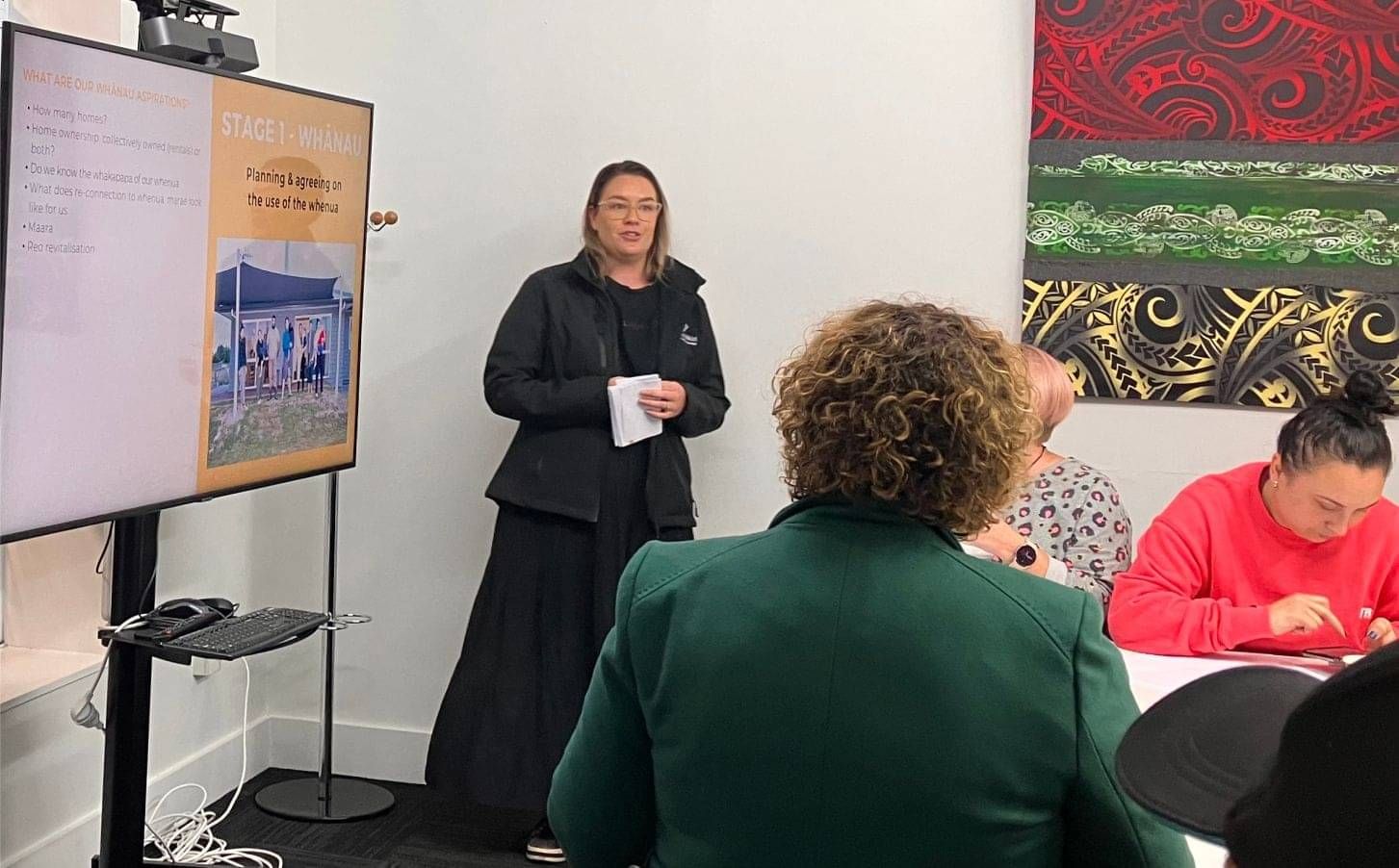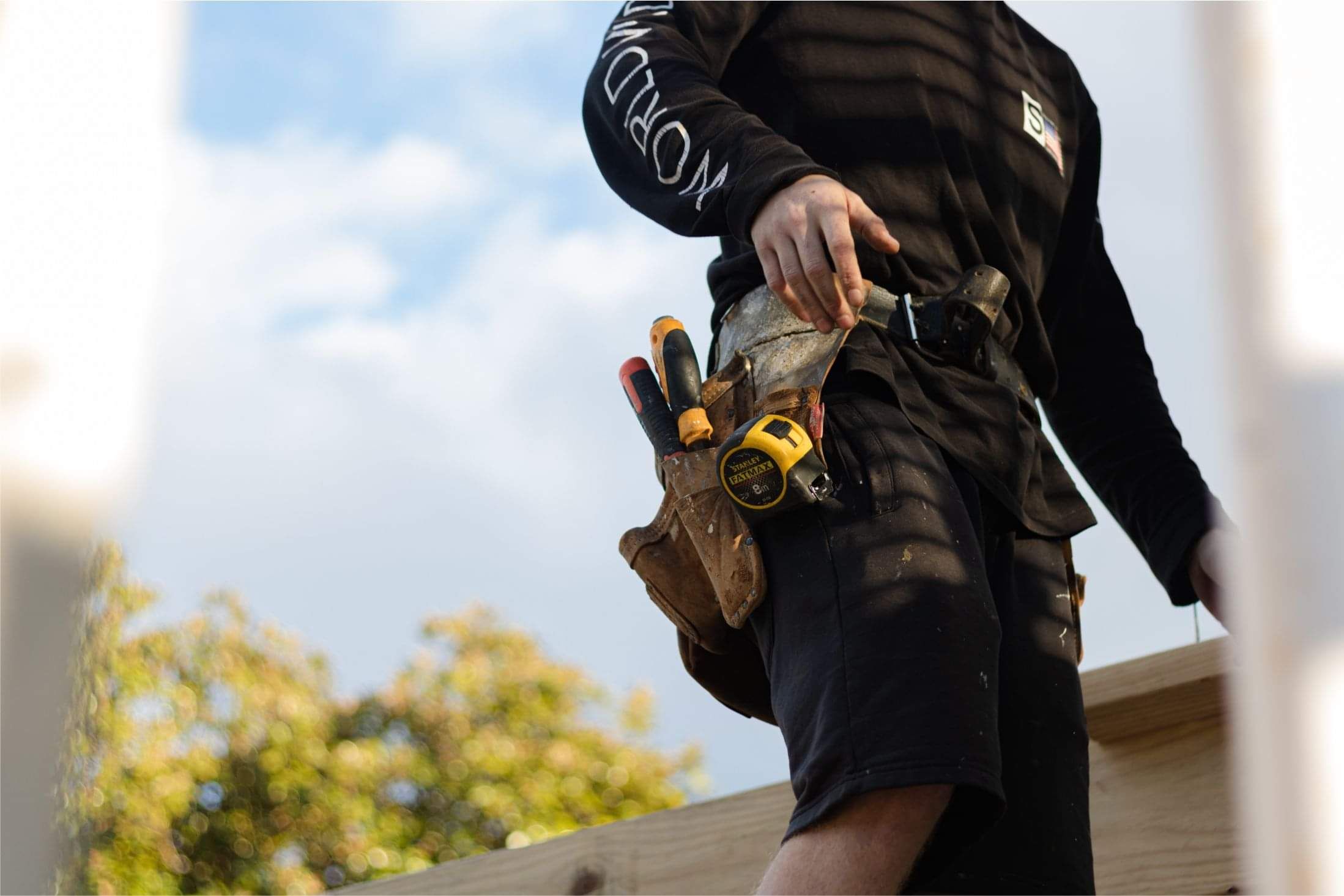Papakāinga Housing
housing on māori land
Papakāinga is a term describing housing on ancestral Māori land.
It can include other activities associated with the nature and function of the papakāinga, such as a marae, shared gardens, or commercial activities that provide jobs and income to support those living in the papakāinga. When we talk about a papakāinga, we mean a group of 3 or more houses, built on whenua Māori, operating as an intentional community according to kaupapa Māori.
Papakāinga is generally considered as 'development of a communal nature on ancestral land owned by Māori'. Rangitāne strongly support the development by whanau of papakainga and other housing formats on their own land that enhance their ability to live as Māori.
Ongoing support for whānau papakāinga housing development is available and we can refer you to appropriate advisers to begin your papakainga journey.
The following is a brief outline of the development process with links to relevant online information to assist with your plans.
1 - Create the vision and share with your whānau
Kōrero with your whānau
Share your vision for papakāinga housing on your whenua with the whānau.
Walk the whenua with whānau and consider the potential e.g. Housing, maara, business opportunities.

2 - Make a plan
Plan it out with your whānau
Why housing and for who?
Will whare be rentals or will there be an opportunity for whānau to build their own whare, or both?
Where would the whare be located?
What entity (if any) sits over the whenua e.g. Trust or Incorporation?
Will a trust need to be setup?
Are there updates needed to be done via the Māori Land Court?

3 - Workshops & Research
Gathering information
Do you have consensus to proceed?
Research your land, its governance, current activities happening on it.
Learn about the history of your whenua and record it e.g. what use to be there, any sites of significance, caves, swampy areas etc.
Are there any legal issues you may need to resolve regarding the whenua e.g. succession, updating of trust/trustees.
What is the demand for housing within your whānau. Who might want to live there and who will decide?
How many whare, what sort of whare and how big?
What building consents will you need? Are there provisions in your local district plan for papakāinga development?
Seek advice from relevant agencies e.g. Te Puni Kōkiri, Māori Land Court, and your local council for guidance.
4 - Feasibility
Engage professional services.
Consult with architects, engineers and other experts to develop a detailed project plan.
Consider site options and technical design details e.g. where to build, gardens, communal area and required infrastructure.
Assess project costs and develop a realistic budget for the development and long-term ongoing management costs.
Assemble a project management (PM) team for development stage.
Commence applications for development funding and/or a Kāinga Whenua loan.
5 - Development
With your funding and/or loan finance in place, your required resource and building consents approved and build contracts signed, construction can begin.

6 - Management
Rentals will require a tenant selection process, bonds, and signed agreements.
Homeownership will require a Licence to Occupy (LTO) to be signed off.
Who will manage the ongoing maintenance, tenancies, and body corporate policies?



